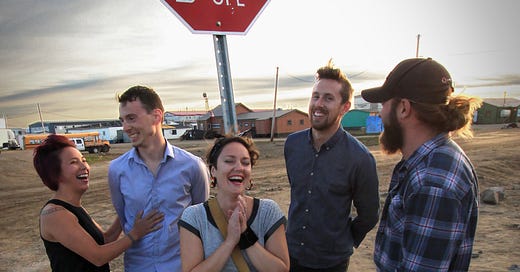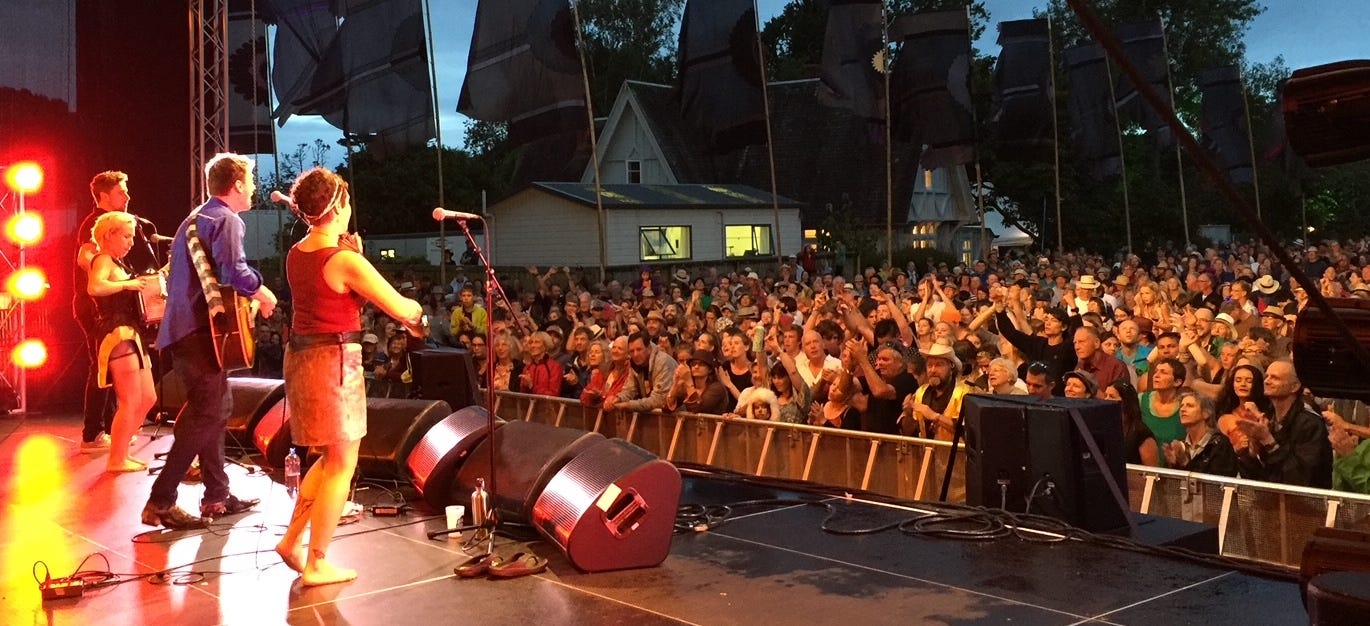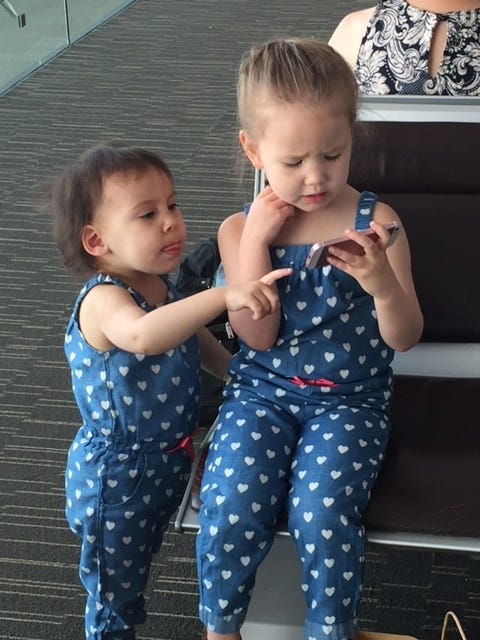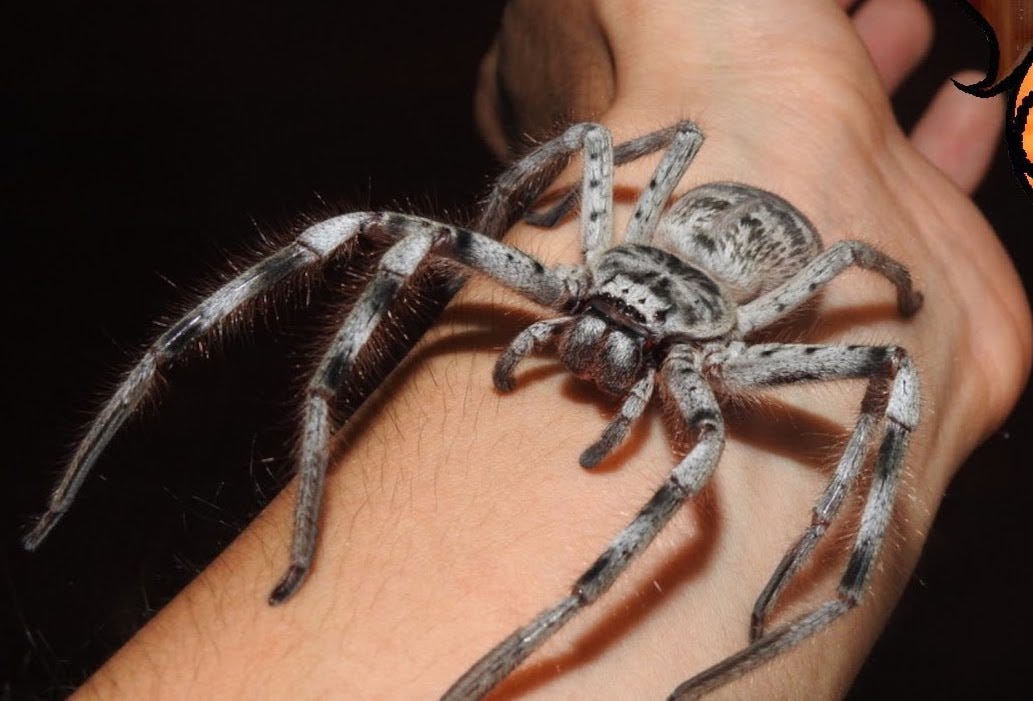#20 Stories from the Edge of Music: Touring Australia with a Band from Canada’s Arctic
On the road Down Under at the other end of the world, a story ‘bout spiders, and some Aussie videos
When I wanted to escape from England in the mid-fifties, I seriously thought about going to Australia. But what if I hated it?, I asked myself — it’s so far away that I might never be able to get back. As I shiver in the middle of a cold Canadian winter, there are moments when I seriously regret that decision.
For five months now, Richard Flohil has been publishing stories, usually every week or 10 days, here on Substack. They’re the memories of a man who spent 60 years as a writer, publicist, club talent booker, concert promoter, festival organizer and serious music fan (he went to 154 live shows last year).
So here are some more Stories from the Edge of Music… and if you know any Australians you might care to share this all-Aussie Substack with them…
FROM SNOW AND ICE TO SUNSHINE DOWN UNDER

When I started working with the Jerry Cans, the pioneering band from Nunavut, my job was to act as their publicist and to introduce them to mainstream Canadian media — and the music industry in “down south.” I had a brief “elevator pitch” to describe them and introduce them:
“Imagine a band from the Arctic that sings in Inuktitut, a language only 20,000 people speak. Think of a folk band that is powerfully political, and that sounds like a cross between the Pogues and an acoustic version of the Clash…”
What I didn’t tell anyone was that the band had only one Inuit member — the slight but impressive Nancy Mike, who used traditional throat singing as an “instrumental” sound in the band’s mix, and who also sang backup and played accordion.
Her (then) husband Andrew Morrison described himself and the others as “a bunch of white guys who’ve lived up here for most of our lives.” Born in Alberta, Morrison had lived in Iqaluit since he was two; completely bilingual, he wrote the songs, led the band, introduced the tunes in English and was an energetic and engaging front man.
Steve Rigby, the band’s drummer, was the party animal; Gina Burgess, the fiddle player, was probably the most accomplished musician on the tour; Brendan Doherty (nicknamed Dotes) was the rock-solid bass player.
My hype worked, if only because the Jerry Cans delivered, every time they had a gig, wherever they were. The band performed on Parliament Hill on Canada Day (Stephen Harper was even seen to smile), did major gigs in Cuba and Germany and Scotland, appeared on the live telecast of the Juno Awards, and played from one side of Canada to the other. And the band became, for four years, a well-known group not only in Canada but in distant Australia.
My agent friend in Melbourne, John Sinclair, used my elevator pitch — greatly expanded with a new CD and video footage — and quickly won an instant response from major world music and folk festivals in Australia and New Zealand. And with Canada Council contributing the cost of air fares to the other end of the world, the Jerry Cans were on their way.
And a year later, the Jerry Cans returned, playing four major folk festivals and travelling between Sydney, Adelaide, Brisbane, Canberra and the Blue Mountains festival in Katoomba.
Apart from the band, the two tours also included Andrew and Nancy’s two adorable kids, Vivii and Laivi, a babysitter (Rita Mike, later known as Riit, with her own album on Six Shooter Records), and Dotes’ partner, Lauren Troutman, as tour manager.
Two tours, a dozen memories
In my mind, both tours merge into one, over a total of almost eight weeks full of memorable incidents. Here are some of them:
• As is the case with most tours, we stayed in a wide variety of accommodations — the Hilton in Adelaide, a cockroach-infested dump in Manly Beach, an Ibis Hotel in a Canberra suburb with half a dozen wallabies on the front lawn, and as guests of a welcoming Maori community in New Zealand.
• The opening ceremonies at the WOMAD festival in Adelaide were led by an Aboriginal elder. Wearing only track pants, with painted white markings on his chest, back and arms, he spoke for 10 minutes in his native tongue, and he sounded angry. Then there were dancers and a didgeridoo player. Afterwards, a 10-year-old Muslim girl, in her school uniform hijab, ran up to him, hugged him around the waist, and skipped away.
• At an airport, Nancy left her accordion behind on the conveyor belt. I earned my place on the tour by noticing she didn’t have it, running back and retrieving it.
• At the WOMAD event in New Zealand, the band soundchecked at noon on the stage where Elton John had played 10 days before. There were 20 people watching, but half an hour later there were hundreds of people cheering, including a man in the front row waving a giant Maple Leaf flag.
• Sitting backstage, with an enigmatic smile as he taps his feet, was David Suzuki, Canada’s most famous environmentalist. He greeted us all with genuine appreciation.
• Having Andrew and Nancy’s two adorable small children with us got us through security, immigration and customs at record speeds — always accompanied by smiles from officials who rarely seemed to have much to smile about. I strongly recommend that all bands take small children on the road with them.
• At the Blue Mountains Festival it poured rain, non-stop, for the first two days. And on Sunday, when the sun finally emerged, the ground was sodden. The giant tent where headliner Paul Kelly was to sing was slowly sinking into the mud. The performance schedule was hastily rearranged, and the Jerry Cans played for 200 people in a nearby hotel’s ballroom. Instead of their usual up-tempo dance-oriented show, they sang and talked about real life in the Arctic, the appalling suicide rate there, the desperation of young people, the preservation of Inuk culture. It was the best show of the tour.
• Prince Edward Island’s Irish Mythen — a singer who has never needed a microphone — celebrated St. Patrick’s Day with an unscheduled concert in a nearby bar. Bless her, she didn’t sing “Danny Boy” or “When Irish Eyes Are Smiling.” And Andrew and Nancy and the band sang along.
• And there was a memorable midnight walk with Gina Burgess on Manly Beach, with crashing waves and a full moon. During the day, this beach is a surfers’ paradise.
• At a midweek gig in Byron Bay, drummer Steve Rigby exchanged his Jerry Cans T-shirt with the flowered blouse of an inebriated young woman. The resulting and revealing show was applauded by the entire bar.
• At another mid-week bar show — and I can’t remember where — an Aboriginal didgeridoo player joined the band on-stage. It could have been a disaster, but it made the evening special.
• At the National Folk Festival in Canberra, the band played in a packed 2,000-seat tent, with massive production, major lighting effects and giant television screens on both sides of the stage.
• Later that day, I got to meet an Australian hero of mine: Dobe Newton, the leader of veteran band the Bushwackers. He promised to send me his band’s newest record; instead he sent me six of the band’s CDs.
• Coming home to North America after the second tour, I realized that I had arrived in Vancouver two hours before I had left Sydney. I know I could Google “international date line” to find out how that happens, but I’m happy to leave that as some kind of magic time travel miracle.
++++++++++++++++++++++++++++++++++++
The takeaway from all of this is simple: find a way to get to Australia.
What a wonderful sunburned land!
And one last word, from Peanuts creator Charles Schulz: “Don’t worry about the world coming to an end. It’s already tomorrow in Australia.”
A VIDEO TO PLACE THE JERRY CANS IN CONTEXT
Here’s an amazing video of the Jerry Cans, directed by Michael Philip Wojewoda and filmed in the Nunavut landscape that surrounds Iqaluit. So far, it has generated more than 700,000 views on YouTube.
+++++++++++++++++++++++++++++++
WORTH TELLING AGAIN: A PASSPORT ADVENTURE IN AUSTRALIA
I’ve told this story before, but it may amuse new readers!
Everyone knows that your passport picture rarely looks like you. Kieran Goss, a wonderful Irish folksinger, has a particularly bad passport photo. Officials look at it, then at him, then back to the picture, shaking their heads — at which point Goss pulls the face he’s wearing in the picture. Satisfied, officials let him enter.
When he arrived in Australia on tour, his first meeting was with possibly the only man in the whole country with no sense of humour.
The immigration official at Sydney airport was not amused when Kieran felt he had to pull what he called his “passport face.” “Security is important,” the official said angrily. “This is not a time for joking about! Do you have a criminal record?”
Goss responded: “Oh, I’m sorry, I didn’t know you still had to have one.”
+++++++++++++++++++++++++++
AH, THE SPIDERS IN AUSTRALIA CAN KILL YOU, OR AT LEAST SCARE THE SHIT OUT OF YOU
In Sydney, the Jerry Cans’ amiable driver, simply named Tizza, regaled the touring party with information about the huntsman spider. Eight legs, black, ugly and as big as your fist. And most Australians tolerate them if only because they eat the tiny poisonous spiders that can kill you.
“I went on holiday to Canada once,” he told us, and you have to imagine his Australian accent. “When I got to Vancouver I realized I had packed one of them in my suitcase, and I think I’d cut off two of its legs when I closed up the case. It had crossed the Pacific and was still alive. I thought, poor little bugger, so I wrapped it in toilet paper and put it on the balcony.
“Thirty seconds later, a seagull flew by and ate it in a single gulp.”
Later, Tizza sent me a note. “But did I tell you about the time I was driving me Land Rover, and one of them crawled up me leg into me shorts and bit me nuts?”
SOME AUSSIE VIDEOS TO PLAY ON THE WEEKEND
Australia has produced some great music. One of my favourite bands from Down Under is the Black Sorrows, fronted by Joe Camilleri. The sheer joy of their music is totally infectious.
One of the most iconic Australian performers was Slim Dusty, best known for the song “The Pub with No Beer.” Dusty was the Aussie equivalent of Canada’s Stompin’ Tom Connors — and this song, “When the Rain Tumbles Down in July” is a highlight of a career that included thousands of performances in Outback communities and major concert halls and festivals. Can there be a more Australian song than this?
Yes, there is an even more Australian song! Written by Dobe Newton, the leader of the Bushwackers, and Bruce Woodley of the Seekers (remember “Georgie Girl”?) this is a song that ought to be the country’s national anthem. If you shed a tear listening to this, maybe you’re an Aussie at heart!
+++++++++++++++++++++++++++
UNTIL NEXT TIME…
Goodness, we’re coming of age! Next week is our 21st edition of Stories from the Edge of Music. Next time, music biz inside stuff — what publicists actually do and how they can build a new artist’s career. There’ll also be a tribute to a legendary figure in the blues world who sadly died last week. And the week after that, look for a flashback to a 1975 on-the-road tour with Canada’s loudest export, Rush…
Each month, some 35 newcomers discover these tales, and some of our subscribers kindly share them with their friends. If you feel like supporting this writing, an upgrade to becoming a PAID subscriber is simple; please consider doing so.







I love your stories. I've also had adventures in Australia and New Zealand. I had some musical adventures in Kings Cross and Bondi in the 90's. And I discovered Eilen Jewell in a small club in Sydney before she played at Byron Bay Blues in 2012. Keep sharing!